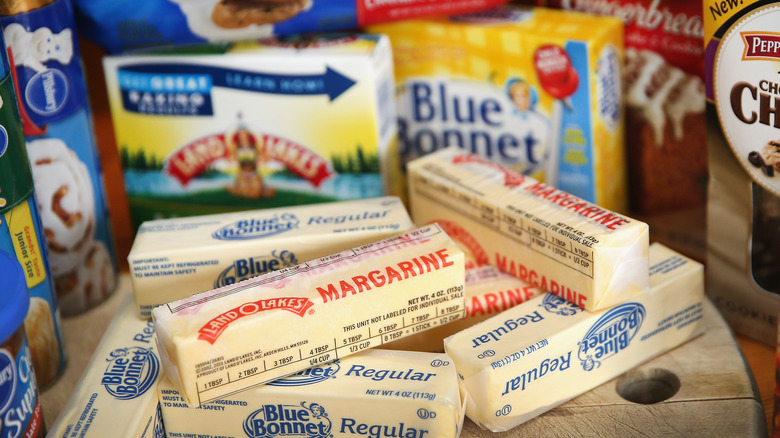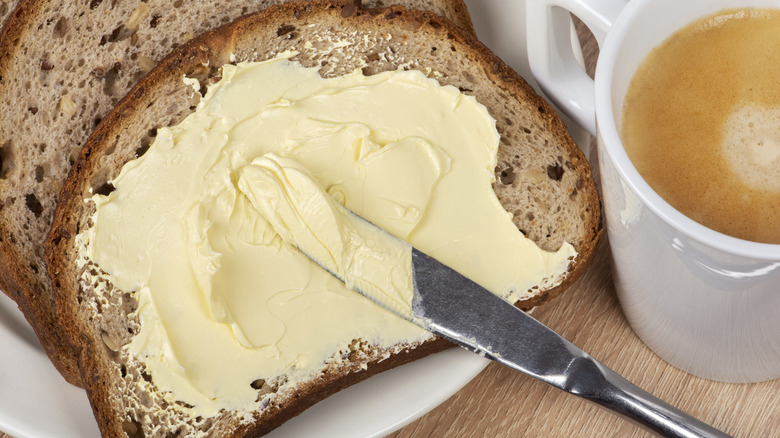Margarine Was Created For An 1869 Competition
The accomplished environmentalist and food policy expert Jean Dye Gussow once remarked, "as for butter versus margarine, I trust cows more than chemists." While butter is, of course, made by churning milk, margarine, on the other hand, is a substitute that is typically made of vegetable oils, water, and salt. As a result of a butter scarcity during World War II, margarine soared in popularity amongst American consumers, and this continued through the rest of the 20th century. Adding to its momentum, in the 1970s, it became widespread knowledge that saturated fats were associated with heart disease, which pushed more people away from butter. Margarine was chosen for its perceived health benefits with its unsaturated fats and celebrated for its ease of spreading on bread. With the help of low-cost alternatives and brands like "I Can't Believe It's Not Butter!" — U.S. margarine production soared in the later part of the 19th century.
Fast forward, and the once frowned-upon butter made a comeback in 2005 by surpassing margarine in sales and has held this lead ever since. Consumer perception shifted to now seeing butter as the more wholesome and natural product. Today butter is being espoused by chefs, nutritionists, and of course, hipsters who are even adding it to their morning coffee. Beyond the fleeting trends and consumer habits, let's not forget about margarine which has a fascinating story dating all the way back to France and Napoleon.
Conquering with margarine
During the Franco-Prussian war in 1869, Emperor Napoleon III needed to feed his starving soldiers, and butter was expensive and hard to find. So, he publicly offered a prize to anyone who could create a readily available alternative to butter. That same year, by churning beef tallow with milk, Hippolyte Mege-Mouries invented the best alternative to butter and won Napoleon's prize. He basically invented a new fatty acid, and the product was called "oleomargarine." Sadly, Mege-Mouries received little recognition and died as a poor man several years later — only his hometown newspaper recognized his passing.
It was the Dutch company Jurgens & Co. (now the global giant Unilever) that took the invention globally by making it appear more like butter. They used yellow food dye on the naturally white margarine to make it a more appealing replacement. Predictably, the dairy industry lobbied hard against its introduction in the market. Legislation passed slapping higher taxes on margarine and banning the use of yellow dye. To really distinguish it from butter, producers were even forced to dye the margarine pink! These restrictions were removed due to the butter scarcity in World War II, and to no surprise, Wisconsin was the last state to remove the ban on yellow dye.
Whether you are on team butter or team margarine, keep in mind that both have served a valuable need, and all of us would be worse off without butter or something like it!

